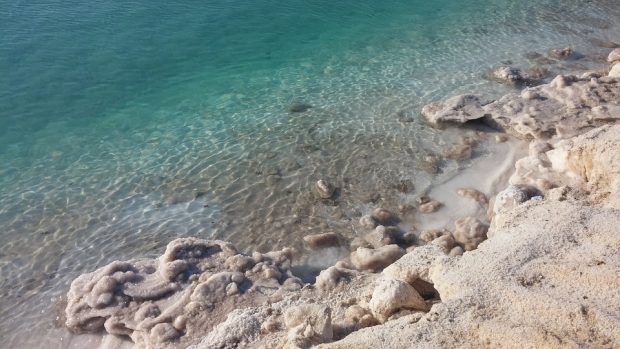

5 Ways To Get More Magnesium
Magnesium is one of the most essential minerals in our diet. Let’s take a look at why you need it and natural ways to get enough of this important mineral.
A few months ago I listened to an interview from Dr. Carolyn Dean speak about her book, The Magnesium Miracle. The podcast was very informative and left me wondering if I was getting enough magnesium in my diet.
According to Dr. Carolyn Dean, most people are magnesium deficient. The RDA requirement for magnesium is only 320-420 mg per day and most Americans only consume half that amount in their diet. Dr. Carolyn Dean also mentioned that the RDA was very low and that we should be consuming 2-3 times the recommended amount.
Why We Need Magnesium
Magnesium is one of the most essential minerals in our diet. When our magnesium levels are low, our bodies will have very little energy. Anxiety, tension and heart palpitations are also signs of magnesium deficiency.
Magnesium deficiency can also contribute to many health problems and diseases such as heart disease, stroke, diabetes, fibromyalgia and infertility.
Below is a list of some of the symptoms of magnesium deficiency Dr. Carolyn Dean mentioned in the podcast.
- Acid Reflux
- Adrenal Fatigue
- Anxiety
- Infetility
- Panic Attacks
- PMS
- Menstrual Cramps
- High Blood Pressure
- Diabetes
- Fibromyalgia
- Constipation
- Migraines
- Morning Sickness
- Heart Attacks
- IBS
- Inflammation
- Insomnia
- Kidney Stones
- Seizures
Why Are We Magnesium Deficient?
There are several reasons why we are so deficient in magnesium these days. Our soil is depleted of nutrients, we eat a diet high in processed foods with very little nutritional value, we live stressful lives (stress burns up magnesium), we starve ourselves on restricted diets and we don’t eat enough foods rich in magnesium. We also consume foods that drain magnesium from our bodies. Alcohol for example, lowers magnesium availability to our cells. Drinking fluoridated water and beverages are also harmful because fluoride binds to magnesium in the body.
5 Ways To Get More Magnesium
Consume foods rich in magnesium like kelp, halibut, mackerel, cocoa, wheat germ, leafy greens, nuts and seeds. It can be difficult to eat enough of these foods to ensure you are getting adequate amounts of magnesium. Update: Some of my readers asked for more information on foods high in magnesium. I have written a follow up post listing several foods that may be beneficial to add to your diet:
1. Food and Supplement
Consume foods rich in magnesium like kelp, halibut, mackerel, cocoa, wheat germ, leafy greens, nuts and seeds. It can be difficult to eat enough of these foods to ensure you are getting adequate amounts of magnesium. Update: Some of my readers asked for more information on foods high in magnesium. I have written a follow up post listing several foods that may be beneficial to add to your diet. Read more here.
Taking magnesium supplements like Natural Calm can also help you consume more magnesium.
Some supplements can have a laxative side effect. If you are sensitive to magnesium supplements it is best to take magnesium transdermally.
2. Magnesium Oil
Magnesium oil can be rubbed or sprayed on your skin. Some people find that it leaves their skin feeling a little itchy and dry. If you don’t like the feeling of the magnesium oil you can spray in on your skin and leave it on for 30 minutes. After 30 minutes you can shower off the oil. I personally love using magnesium oil on my skin and have not had any issue with itching or drying skin. You can find high quality magnesium oil here or make your own magnesium oil at home.
3. Magnesium Lotion or Body Butter
Another option is magnesium lotion or body butter. Many people prefer magnesium lotion over magnesium oil. Apply magnesium lotion daily or as needed. You can find quality magnesium lotion here or make your own.
4. Swim in the ocean
Ocean water is rich in magnesium! If you live near a beach, take a swim in the ocean and absorb the magnesium.
5. Epsom Salt Baths or Magnesium Chloride Baths
Take an epsom salt bath or magnesium flake bath 2-3 times a week or daily if you can. Dr.Carolyn Dean suggested 2 cups of epsom salts for baths and 1 cup of epsom salts in foot baths. You can find magnesium chloride flakes here.

How Do You Know If You’re Magnesium Deficient
If you suffer from any of the symptoms of magnesium deficiency, Dr.Carolyn Dean suggests supplementing with magnesium orally or transdermally until symptoms disappear. You can also ask your physician for an Ionized magnesium test to check your magnesium levels.
Citations:
All post and information provided within this blog is for informational and educational purposes only, and is not to be construed as medical advice or instruction. No action should be taken solely on the contents of this website. Please consult your physician or a qualified health professional on any matters regarding your health and well-being or on any opinions expressed within this website.


